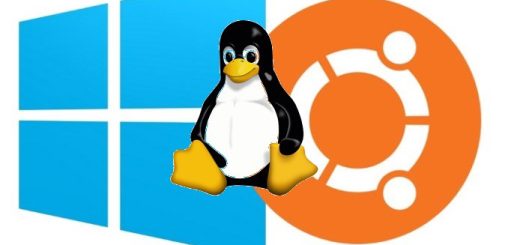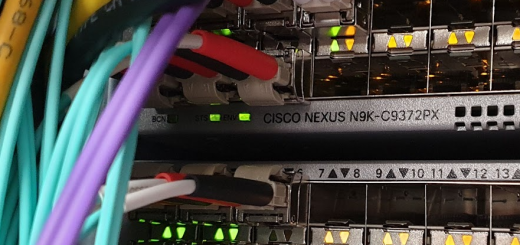How to Free Up Disk Space on Microsoft Windows
Microsoft Windows is available in many different versions like Windows 10 and Windows 11, is a widely used operating system. However, regardless of the Windows version, users often encounter the issue of running out of disk space. Learning how to free up disk space is a vital skill for everyone, from novice users to experienced systems administrators. It’s crucial to know what you can safely remove and what to keep.

Why Disk Space Matters
Disk space plays a pivotal role in ensuring the seamless operation of your computer system. Insufficient free space affects your ability to store new data, such as Windows Updates and files, and can degrade your computer’s performance. It can result in slower file access, hindered software updates, and, in the very worst-case scenarios, lead to data loss.
The most significant impact you will experience is your PC or Laptop slowing down. This will be much more noticeable on less powerful systems.
Identifying Disk Space Usage
Windows Built-in Tools
Windows offers built-in tools like ‘Storage Sense’ and the ‘Disk Cleanup’ utility that allow you to monitor and manage your storage.
Storage Sense
Storage Sense, accessible from the Settings app, Storage Sense provides a comprehensive overview of your disk usage. It also includes an automated feature that can clean up temporary files, delete temporary files associated with Windows Update, and even purge locally cached cloud content.


Disk Cleanup
This utility is a powerful tool for freeing disk space. It scans your internal drive for various types of unnecessary files, including Windows Update cache, Windows Upgrade cache, log files, and temporary files. It even offers the option to clean up system files from previous Windows installation



Third-Party Applications
Besides built-in features, third-party applications like CCleaner and TreeSize offer more comprehensive functionalities. These applications give a more detailed view of your storage distribution and provide advanced features like bulk file removal and system optimization.
Treesize is available as a free or paid-for pro version. The free version is more than adequate for everyday users. The most significant limitation of the free version is that you cannot scan network drives. But it’s OK for local disks.

Essential Methods to Free Up Disk Space
Empty the Recycle Bin
Deleted files aren’t truly gone until you empty the Recycle Bin. This is a quick and easy way to reclaim space.

Often, we forget that deleted files move to the Recycle Bin and continue occupying disk space. Emptying the Recycle Bin is an effective and immediate way to free up space.
Uninstall Unused Programs
Open the ‘Control Panel,’ navigate to ‘Programs,’ and select ‘Uninstall a Program.’ From this list, identify and remove programs you no longer use.

Clear Temporary Files
Temporary files accumulate over time and can consume considerable disk space. Navigate to the ‘Temp’ folder by typing %temp% in the Run dialog box and delete all the files within.

Advanced Methods to Free Up Disk Space
Remove Duplicate Files
Tools like Duplicate Cleaner Free can help you find and remove duplicate files, freeing up valuable storage.
Free Up Disk Space from Windows Update
Windows stores copies of all installed updates from Windows Update, taking up much disk space. To remove these files, you can use the ‘Disk Cleanup’ utility and select the ‘Windows Update Cleanup’ option.
Manage Restore Points and Shadow Copies
System restore points can also consume significant space. Open’ System Properties,’ go to the ‘System Protection’ tab, and manage your settings under ‘System Restore.’
Moving the Page File
The Windows Page File (pagefile.sys) acts as ‘virtual memory’ and can take up several gigabytes of space. If you have enough storage space, it can be moved to another drive by accessing ‘Advanced system settings’ and then navigating to ‘Performance’ settings.
What Windows System Folders Can Be Safely Deleted
Be cautious when deleting system folders. However, folders like $Windows.~BT, Windows.old, and contents within C:\Windows\SoftwareDistribution\Download can often be deleted without causing issues.
Optimize Storage Space
Using Cloud Storage
Services like Google Drive and Microsoft OneDrive offer a convenient way to offload files from your local hard drive and access them from anywhere.
Compress Files
Compressing files can save space but may also slightly reduce file access speed. You can use built-in tools or third-party software for this purpose.
Maintenance Tips
Regularly reviewing your storage consumption and performing routine cleanups will help you maintain an optimized system. Schedule periodic disk cleanups and be mindful of the files you download and store.
Managing disk space is crucial for maintaining a healthy and efficient computer system. As outlined in this guide, employing a mixture of basic and advanced strategies will allow you to reclaim and optimize your storage space effectively. Take the initiative today to clean up your disk and breathe new life into your computer.
Q&A for Managing Disk Space on Microsoft Windows
Q: Why is managing disk space important for Windows users?
A: Managing disk space is crucial for ensuring the seamless operation of your computer system. Insufficient disk space can lead to slower performance, hindered software updates, and, in extreme cases, even data loss.
Q: What built-in tools does Windows offer for monitoring and managing disk space?
A: Windows provides tools such as ‘Storage Sense’ and the ‘Disk Cleanup’ utility. ‘Storage Sense’ offers an overview of disk usage and automated cleanup of temporary files, while ‘Disk Cleanup’ allows users to remove various unnecessary files, including Windows Update and temp files.
Q: Are there third-party applications recommended for managing disk space on Windows?
A3: Yes, applications like CCleaner and TreeSize offer more comprehensive functionalities. These tools provide a detailed view of storage distribution and advanced features like bulk file removal and system optimization.
Q: What are some basic methods to free up disk space on Windows?
A: Basic methods include emptying the Recycle Bin, uninstalling unused programs, and clearing temporary files. These actions provide immediate and effective ways to reclaim disk space.
Q: Can you suggest advanced methods for freeing up disk space on Windows?
A: Advanced methods include removing duplicate files with tools like Duplicate Cleaner Free, cleaning up Windows Update files using the ‘Disk Cleanup’ utility, managing restore points, and even moving the Page File to another drive.
Q: Can specific Windows system folders be safely deleted to free up space?
A: While caution is advised, folders like $Windows.~BT, Windows.old, and contents within C:\Windows\SoftwareDistribution\Download can often be deleted without causing issues.
Q: How can users optimize storage space on Windows using external solutions?
A: Users can leverage cloud storage services like Google Drive or Microsoft OneDrive to offload files from local storage, providing a viable alternative for managing space. Compressing files using built-in tools or third-party software can also help save space.
Q: What maintenance tips do you recommend for efficient disk space management?
A: Regularly review storage consumption, perform routine cleanups using built-in or third-party tools, and schedule periodic disk cleanups. Mindful of the files you download and store contributes to maintaining an optimized system.
Q: Why should users take the initiative to clean up disk space on their Windows systems?
A: Cleaning up disk space is essential to breathe new life into your computer, ensuring it operates efficiently. Combining primary and advanced strategies outlined in this guide will help reclaim and optimize storage space effectively.
Q: Does Windows Update take up space?
A: Yes, Windows Update does take up space. Downloaded updates, installation files, and even previous versions of Windows (after a feature update) can consume significant space on your internal drive. However, you can safely remove many of these files using the Disk Cleanup tool or Storage Sense.
Q: How much space do I need to install Windows updates?
A: The amount of free disk space required for Windows updates varies depending on the update type and your Windows version. For minor updates, a few gigabytes might suffice, but major updates (like a feature update or upgrading to a new Windows version) may require 10GB or more disk space. Windows usually checks if you have enough space before the installation process starts. If not, you’ll see a pop-up window warning you and directing you to the Windows Update page for more information.
Q: Can I use an external storage device to free up space?
A: Yes, an external hard drive or other external storage device can be used to offload important files, media, or other data, freeing up space on your C drive. You can also use an external drive to create a backup of your important files before attempting more advanced cleanup methods.
Q: What is a clean install, and does it free up space?
A: A clean install of Windows involves completely erasing your existing operating system and installing a fresh copy. This can reclaim space used by previous installations, log files, and other accumulated data. However, it’s important to back up your data beforehand, as a clean install will erase everything on your C drive.
Q: How can I recover files I accidentally deleted?
A: If you’ve emptied your Recycle Bin, there are still ways to potentially recover files. Third-party data recovery software can sometimes retrieve lost files, but success isn’t guaranteed. It’s always best to have a backup of your important files to avoid this situation.
Q: Is there a ‘Remove files’ button to free up space easily?
A6: While there isn’t a single ‘Remove files’ button to magically free up all unnecessary space, both Storage Sense and Disk Cleanup offer options to remove files in various categories. These tools allow you to select and delete temporary files, system files, and other data you no longer need.
Let me know if you have any other questions!




Recent Comments